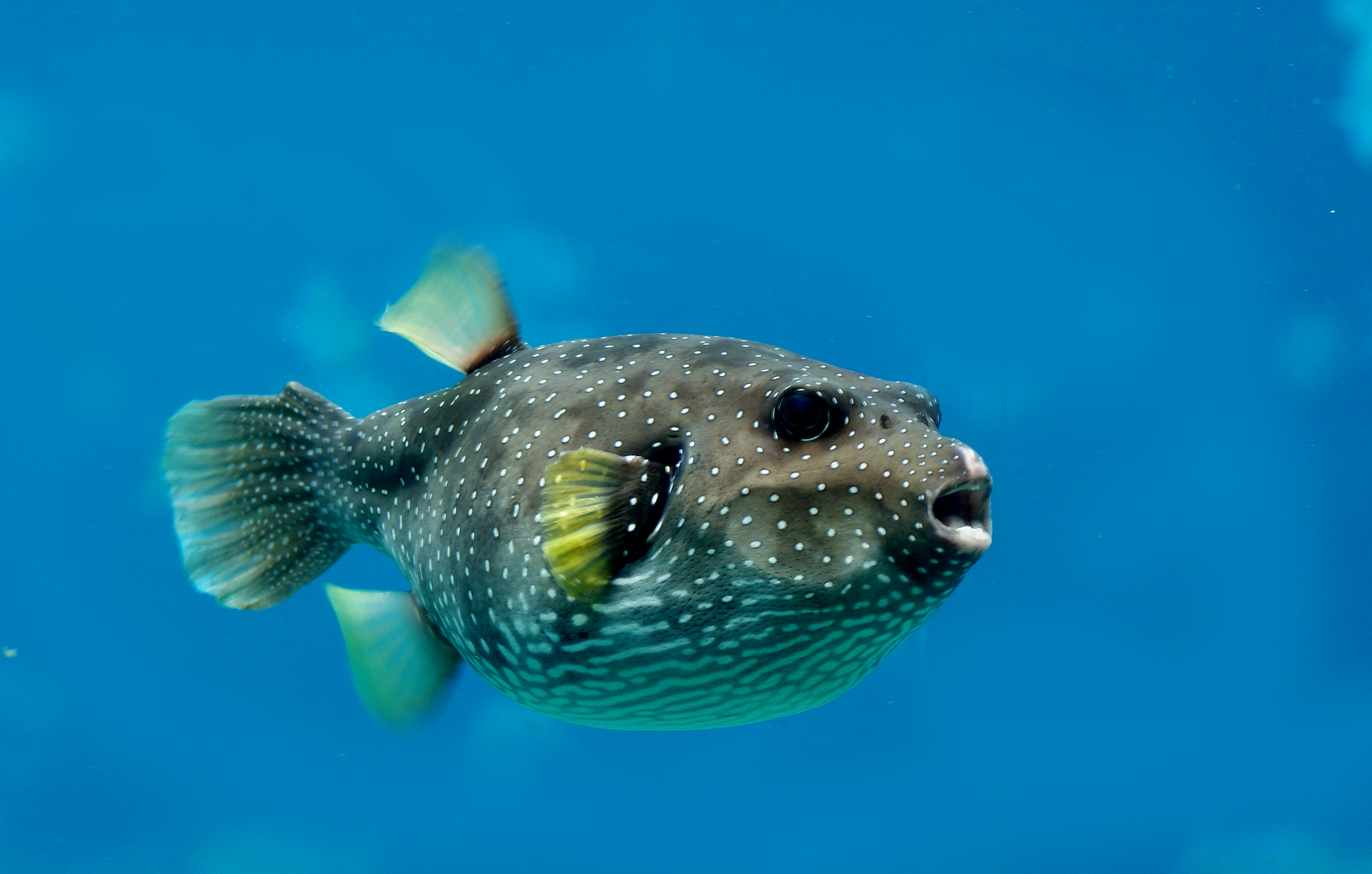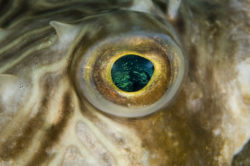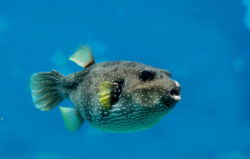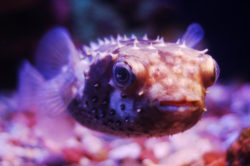
Sea Wonder: Pufferfish

An up close shot of a pufferfish’s eye in Gray’s Reef National Marine Sanctuary. Photo: Greg McFall/NOAA
If you’ve ever seen a pufferfish in a movie or on TV, you know about their amazing inflatable abilities. But, how much else do you know about them?
Description
We know of nearly 120 species of pufferfish worldwide, which make up the scientific family, Tetraodontidae. Depending on where and how they live, they all look a little different. Common characteristics include football-shaped bodies that are covered in small spines that stick out when inflated and fused teeth that look like a beak. The smallest pufferfish in the world is about an inch long while the largest is more than two feet long. They don’t have scales like many other species of fish and their colors range from vibrant and bright to muted and cryptic – this depends on their habitat and diet among other factors.
Diet & Habitat
Most pufferfish live in tropical or subtropical waters (including Florida Keys and Flower Garden Banks national marine sanctuaries), but some live in freshwater or brackish water (a mix of salt and freshwater). No matter where they live, they rely on algae and invertebrates for most of their dietary needs, though larger species may feed on corals, mussels, clams, and other shellfish using their beaks.
Life History
Pufferfish aren’t the most graceful swimmers. In fact, they are pretty clumsy and slow. As an adaptation to offset their vulnerability to predators, they can inflate to nearly three times their size using air or water and most pufferfish also have toxins that can make them taste bad or even kill predators that try to eat them. Inflation is temporary and scientists believe poisonous pufferfish synthesize these substances using the bacteria that live on the food they eat.
Pufferfish are also responsible for ornate shapes dug into the seafloor that have mystified divers and scientists for decades. These are the result of some species of pufferfishes’ mating rituals where males make beautifully detailed round nests in the sand to attract females.
Threats and Conservation
Puffer populations are generally stable worldwide as they aren’t a common fishing target, though they are considered a delicacy in some countries due to the thrill of experiencing the numbness created by mild pufferfish poison. However, specially trained and licensed chefs are generally the only people allowed to purchase and prepare pufferfish, as doing so incorrectly can be lethal to diners!
By taking actions to protect the ocean, we can help these incredible (but clumsy) fish thrive.


